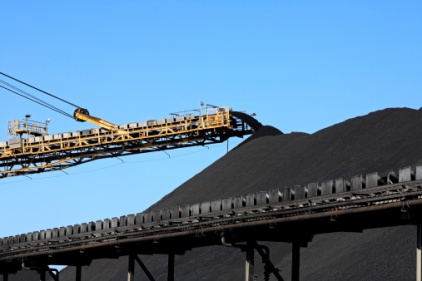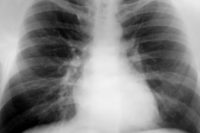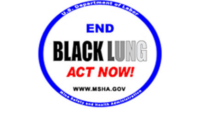 The Mine Safety and Health Administration (MSHA) announced that the final rule "Examinations of Work Areas in Underground Coal Mines for Violations of Mandatory Health or Safety Standards" will be published in the April 6 issue of the Federal Register. The rule will require mine operators to identify and correct hazardous conditions and violations of nine health and safety standards that pose the greatest risk to miners, including the kinds of conditions that led to the explosion at the Upper Big Branch Mine.
The Mine Safety and Health Administration (MSHA) announced that the final rule "Examinations of Work Areas in Underground Coal Mines for Violations of Mandatory Health or Safety Standards" will be published in the April 6 issue of the Federal Register. The rule will require mine operators to identify and correct hazardous conditions and violations of nine health and safety standards that pose the greatest risk to miners, including the kinds of conditions that led to the explosion at the Upper Big Branch Mine.
"Many of the same types of violations of mandatory health and safety standards are repeatedly found by MSHA inspectors in underground coal mines every year," said Joseph A. Main, assistant secretary of labor for mine safety and health. Main said his inspectors cannot be at every mine every day, so the new standard places mine operators in a proactive rather than reactive role.
The nine standards address ventilation, methane, roof control, combustible materials, rock dust, equipment guarding and other safeguards. They are consistent with the standards emphasized in MSHA's "Rules to Live By" initiative and the types of violations cited in MSHA's accident investigation report on the Upper Big Branch Mine explosion as contributing to the cause of that deadly accident.
The rule requires that, during pre-shift, supplemental, on-shift and weekly examinations, underground coal mine operators must, in addition to examining for hazardous conditions as in the existing regulations, record the actions taken to correct the conditions and violations. Operators also must review with mine examiners, on a quarterly basis, citations and orders issued in areas where pre-shift, supplemental, on-shift and weekly examinations are required. The rule was proposed in December 2010, and five public hearings were held in June and July 2011. Mine operators are currently required by law to conduct these examinations; the final rule will ensure that such examinations are maximally effective in preventing injuries and fatalities by requiring operators to examine and fix violations of those standards that represent the greatest risk to underground coal miners.
In 2010, MSHA cited approximately 173,000 violations, of which approximately 80,000 were attributable to underground coal mines, even though these mines represent just 4 percent of all mines.
MSHA launched Rules to Live By, an outreach and enforcement program designed to strengthen efforts to prevent mining fatalities, in February 2010. The first phase was focused on spotlighting the safety and health standards most frequently cited during fatal accident investigations. Rules to Live By II, which began in November 2010, reviewed accidents that resulted in five or more fatalities, as well as incidents caused by fires or explosions that had the potential to result in more fatalities. Rules to Live By III, initiated this past January, focuses on 14 safety standards associated with violations contributing to at least five mining accidents and at least five deaths during a recent 10-year period.
MSHA publishes final rule on examinations in underground coal mines

Looking for a reprint of this article?
From high-res PDFs to custom plaques, order your copy today!





